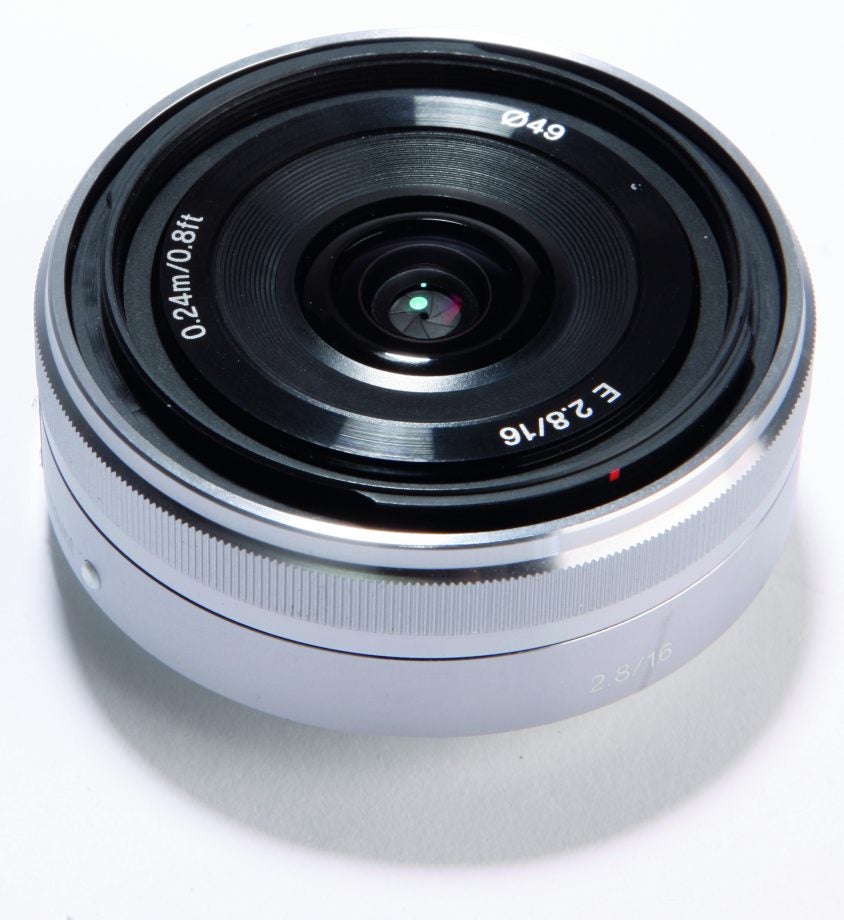Sony 16mm f/2.8 Pancake Review
Sony 16mm f/2.8 Pancake Review
The Sony 16mm f/2.8 Pancake lens features a slim-line profile that allows photographers to make the most of the NEX series slimline design

Verdict
Key Specifications
- Review Price: £220
Sony’s 16mm f/2.8 lens, which has the same angle-of-view as a 24mm lens used on a full-frame camera, is another example of the ultra-slim pancake design. It is also a very simple lens in that it comprises just five elements, each of which constitutes its own group.
Compare this with lenses for Sony dSLR cameras; the 16mm (full-frame fisheye) employs 11 elements and the 24mm (Carl Zeiss) employs 9 elements respectively. All of which begs an important question: is the E-mount lens in the same league as Sony’s dSLR lenses?
There is only one control on the lens – a rotating ring that occupies the front half of the barrel. Provided that DMF mode is selected on the camera body, this ring allows the user to apply manual focusing corrections in AF mode using an enlarged view of the scene.
It has to be said that moving the enlarged area is very, very tricky as half-pressure has to maintained on the shutter release while the thumb of the same hand applies pressure to the four sides of the navigation wheel on the back-plate.
In addition, setting DMF mode removes the option to switch between AF-S (for static subjects) and AF-C (for tracking moving subjects). Adjusting the aperture is also tricky as it can only be done using the navigation wheel on the back of the camera.
Technical testing produced a classic aerofoil MTF curve that sat rather low on the y-axis of the graph. At both f/2.8 (maximum aperture) and f/22 (minimum aperture) the MTF curve was below 0.2 cycles per pixel: the curve went above the critical 0.25 cycles-per-pixel level only between f/4 and f/14. There were also very clear signs of chromatic aberrations on the high-contrast test target. Nevertheless, no such colour fringes were seen in real-world images, which is a more important finding.
Two lens converters extend the versatility of Sony’s 16mm lens; the VCL-ECU1 expands the angle-of-view to that of a 12mm lens (equivalent to 18mm on a full-frame camera) whereas the VCL-ECF1 provides a fisheye effect. Both converters attach via a bayonet fitting that is provided on the front of the 16mm lens in addition to its 49mm filter thread.
Sample images



Verdict
Overall this is a capable lens that is let down slightly by its reliance on camera-based controls but benefits from two dedicated lens converters.

